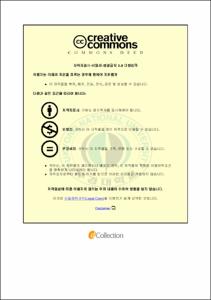Characterization of Wheat Germ Oil Converted by Immobilized Lipase Ethanolysis
- Alternative Title
- 고정화 리파아제를 이용한 에탄올화 반응으로 전환된 밀배아유의 특성
- Abstract
- 현재 밀배아는 제분 과정에서 얻어지는 부산물로 대부분의 밀배아는 저렴한 사료로 이용되고 있어 밀배아의 활용도는 극히 낮은 실정이다. 그러나 밀배아에는 천연항산화제의 역할을 하는 비타민 E 등이 많이 함유되어 있고, tocopherol과 phenolic류 등의 천연기능성 물질들이 많이 함유되어 있어, 식물유의 산패를 억제하기 위해 이용되기도 한다.
이산화탄소는 낮은 임계점과 무독성, 그리고 용매의 사용량이 적고 부식성이 없이 친환경적이기 때문에 가장 널리 이용되는 초임계 유체이며 기존의 추출법이 가지는 어려움을 해결할 수 있는 새로운 혁신기술로서 주목받고 있다.
본 논문에서는 초임계 이산화탄소를 이용하여 밀배아를 추출하였고, 추출된 밀배아유에서 효소적 에탄올화 반응을 실시하였고 그 기능성에 대하여 연구하였다.
고도불포화 지방산 함유 diglyceride, monoglyceride 및 fatty acid methyl ester를 생성하기 위해 고정화 효소인 lipozyme TL-IM과 lipozyme RM-IM을 사용하여 밀배아유의 효소적 에탄올화 반응을 수행하였다. 반응은 에탄올, 온도, 효소량, 반응시간에 따른 밀배아유의 전환율을 실험해 보았고, 초임계 이산화탄소를 이용하여 추출한 오일과 일반 유기용매를 이용하여 추출한 오일의 전환율을 비교하였다.
초임계 유체 추출은 200 bar 40℃에서 2시간 동안 추출한 오일을 이용하였다. 오일의 지방산 및 밀배아의 분자량을 계산하기 위하여 gas chromatography를 이용하여 분석하였으며 TLC나 HPLC를 이용하여 지질의 정성분석을 하였다.
상압에서 반응된 밀배아 오일의 전환율을 비교해보았을 때 60℃에서 최대 반응전환율을 보였으며 초임계 이산화탄소 상태에서 반응해 보았을 때는 10 MPa, 50℃에서 최대 반응 전환율을 보였다. 본 연구에서 가압 조건에서 반응하였을 때 비가압에서의 반응에 비해 더 높은 수율을 얻었음을 확인 할 수 있었다.
반응 후 생성된 소재의 안정성을 확인하기 위해 산가, 과산화물가, 유리지방산 함량, 산화안정성 (thiocynate method, DPPH 라디칼 소거능, rancimat test)을 통하여 확인한 결과 40℃ 반응조건에서 생성된 소재가 가장 안정성이 높았으며 이는 반응온도가 높을수록 소재의 산화가 빨리 진행됨을 추측 할 수 있다.
또한 반응 후 생성물에 함유되어 있는 리파아제의 활성을 측정한 결과 가압 상태에서 회수된 생성물과 비가압에서 회수된 생성물의 리파아제 활성은 큰 차이가 없음을 확인 할 수 있었다.
- Issued Date
- 2011
- Awarded Date
- 2011. 8
- Type
- Dissertation
- Publisher
- 부경대학교
- Alternative Author(s)
- Sim, Jeong-Eun
- Affiliation
- 식품공학과
- Department
- 대학원 식품공학과
- Advisor
- 전병수
- Table Of Contents
- Contents
1. INTRODUCTION 1
1.1 Background 1
1.2 Scope of this thesis 7
2. MATERIALS AND METHODS 8
2.1 Materials 8
2.2 Sample preparation 8
2.2.1 Supercritical carbon dioxide extraction 9
2.2.2 Ethanolysis in atmospheric system using immobilized enzyme 10
2.2.3 Ethanolysis in SC-CO2 System using Immobilized Enzyme 12
2.3 Analytical methods 14
2.3.1 Gas chromatography (GC) 14
2.3.2 Thin layer chromatography (TLC) 15
2.3.3 High-performance liquid chromatography (HPLC) 16
2.4 Measurement of oil stability 18
2.4.1 Free fatty acid content of ethanolysis reactants 18
2.4.2 Acid Value 20
2.4.3. Peroxide Value 21
2.4.4 Thiocyanate method 22
2.4.5 DPPH radical scavenging activity 23
2.4.6. Rancimat test for antioxidant activity 23
2.5 Enzyme activity 24
2.5.1. Lipases assay 24
2.6 Statistical analysis 24
3. RESULTS AND DISCUSSION 25
3.1 Fatty acid Composition 25
3.2. Ethanolysis in atmospheric system using immobilized enzyme 27
3.2.1. Characteristic of enzymatic ethanolysis 27
3.2.3. Effect of mole ratio on enzymatic ethanolysis 30
3.2.4. Effect of temperature on enzymatic ethanolysis 31
3.2.5. Effect of enzyme load on enzymatic ethanolysis 35
3.2.6. Effect of reaction time on enzymatic ethanolysis 37
3.2.6.1. Initial reaction tendency 37
3.2.6.2. Ethanol graded addition 37
3.2.7. Comparison of conversion in organic extraction and SC-CO2 extraction 41
3.3. Ethanolysis in pressured system using immobilized lipase 43
3.3.1. Effect of temperature in pressured system 43
3.3.2. Effect of pressure in pressured system 44
3.3.3. Comparison of conversion in non-pressured system and pressured system 45
3.4 Characterization of ethanolysis reactants 49
3.4.1 Fatty acid composition of ethanolysis reactants 49
3.4.2 Oil Stability 49
3.4.2.1 Comparison of free fatty acid of enzymatic ethanolysis reactant 49
3.4.2.2 Comparison of acid value and peroxide value of enzymatic ethanolysis reactants 50
3.4.3 Oxidative Stability 55
3.4.3.1 Thiocyanate method 55
3.4.3.2 DPPH radical scavenging effect 56
3.4.3.3 Rancimat test 56
3.5 Lipase activity 60
4. CONCLUSION 62
5. ACKNOWLEDGEMENT 64
6. REFERENCE 65
- Degree
- Master
- Files in This Item:
-
-
Download
 Characterization of Wheat Germ Oil Converted by Immobilized Lipase Ethanolysis.pdf
기타 데이터 / 930.75 kB / Adobe PDF
Characterization of Wheat Germ Oil Converted by Immobilized Lipase Ethanolysis.pdf
기타 데이터 / 930.75 kB / Adobe PDF
-
Items in Repository are protected by copyright, with all rights reserved, unless otherwise indicated.